By Emma Heller
Orange Terrace Spring is located on the Upper Terrace Loop drive at the Mammoth Terraces.
Emma Heller
In our last update, As Some Roads Open, Others Close (Seasonally), we talked about Park roads that seasonally close each November for the winter. On December 15th this year, Yellowstone reopens roads for the winter, but not for the typical vehicles you think of. Yellowstone Park has one route through the North Eastern part of the Park that is open year-round. This route goes from the North Entrance in Gardiner, Montana to the North East Entrance in Cooke City, Montana. All of the other roads in the Park are only open to travel via commercially guided snowmobiles and snowcoaches, the non-commercially guided snowmobile program, cross-country skis and snowshoes. While we do not operate during the winter, we love exploring Yellowstone Park and seeing it transformed into an entirely different landscape.
If you thought Yellowstone was amazing to see in the summer, visiting Yellowstone in the winter gives you a new perspective. A blanket of snow covers Yellowstone. Snow levels reach on average 50 to 200 inches depending on elevation and location. Average temperatures in the Park range from winter highs of 20–30ºF and lows of 0-9 ºF. The record low was -66 ºF near the West Entrance on February 9, 1933! Burrr!
NPS/Addy Falgoust
The harsh winter conditions have forced wildlife in Yellowstone to adapt to these winter obstacles. While in the Park you might see bison, elk, moose, wolves, fox, coyote, otters, eagles and trumpeter swans. Have you ever wondered why bison have a large hump on their shoulders and a shovel-like head? Bison can reach food beneath three feet of snow, because a bison’s hump is made of elongated vertebrae for strong neck muscles to push snow out of the way with their head-like a shovel. Elk and deer have to manage walking through snow and you’ll often find them in single file lines in deep snow. Moose have special joints that allow them to swing their legs over snow rather than push through like other ungulates. Ever wondered why snowshoe hares, white-tailed jackrabbits and weasels turn white in the winter? The white provides camouflage and the hollow white hair contains air instead of pigment which helps with insulation. A favorite year-round bird in the area are Chickadees, you can hear their chicka dee dee dee call year-round. In the winter, they have a half-inch-thick layer of feathers that keeps them up to 100 degrees warmer than the ambient temperature. Sounds cozy! Wildlife such as bison, elk, geese and other animals utilize the thermal areas to find food and stay warm.
NPS/Addy Falgoust
Visitors looking at Palette Spring on the boardwalk at the Mammoth Terraces.
NPS/Addy Falgoust
Thermal features in the Park take on an entirely new look in the winter. It’s amazing to see the amount of heat they produce, even on the snowiest and coldest days. You can travel in an automobile to check out Mammoth Hot Springs at the North Entrance and walk around the Mammoth Terraces. You can also snowshoe or cross-country ski around the Mammoth Terrace Loop. To visit the other hydrothermal areas in the Park, like Old Faithful, you must travel by snowmobile or snowcoach.
Traveling in Yellowstone Park in the winter can be tricky, but if you plan ahead it is worth the trip. Yellowstone Scenic Tours does not operate during the winter, our operating season is May through October. However, there are many other great companies to show you Yellowstone. If you are traveling by automobile in the North Eastern section of the Park, be sure to check the road status, have a full tank of gas and pack extra food and water. Keep in mind that Park services are limited, you can check here to see what is open. Most of the Park has limited cell service, however you can download the Yellowstone Park app to stay in the know. Out of the North, West and South Entrances, guided snowcoach or snowmobile tours can be booked to explore Yellowstone. If you have your own snowmobile, you must apply for a permit. You can even stay in Yellowstone during the winter. This year, only the Snow Lodge at Old Faithful is open or you can stay outside of the Park in nearby communities. Typically, the Mammoth Hotel is open year-round, however the flooding in June has kept it from opening this winter.
A guided snowmobile tour and snowcoach in Yellowstone.
NPS/Jacob W. Frank
Yellowstone National Park has a special place in our hearts. We love spending time in the Park during the summer and look forward to exploring it with you. We hope to hear about your winter travels in Yellowstone and share our stories with you.






